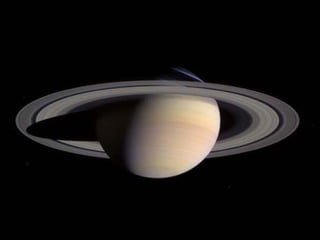Sensation & Perception
•Download as PPT, PDF•
9 likes•1,085 views
Sensation, Perception, Vision, Hearing, Smelling, Tasting, Feeling, Balance, Movement
Report
Share
Report
Share

Recommended
Recommended
More Related Content
What's hot
What's hot (19)
Viewers also liked
Viewers also liked (13)
Introductory Psychology: Sensation & Perception (Vision)

Introductory Psychology: Sensation & Perception (Vision)
Similar to Sensation & Perception
Similar to Sensation & Perception (20)
PSYCH1_Chapter6_SensationAndPerception_Group4 (1).pptx

PSYCH1_Chapter6_SensationAndPerception_Group4 (1).pptx
More from Alex Holub
More from Alex Holub (20)
Have the pseudo-religious cults promoted belief systems that create emotional...

Have the pseudo-religious cults promoted belief systems that create emotional...
Recently uploaded
https://app.box.com/s/7hlvjxjalkrik7fb082xx3jk7xd7liz3TỔNG ÔN TẬP THI VÀO LỚP 10 MÔN TIẾNG ANH NĂM HỌC 2023 - 2024 CÓ ĐÁP ÁN (NGỮ Â...

TỔNG ÔN TẬP THI VÀO LỚP 10 MÔN TIẾNG ANH NĂM HỌC 2023 - 2024 CÓ ĐÁP ÁN (NGỮ Â...Nguyen Thanh Tu Collection
Recently uploaded (20)
Jual Obat Aborsi Hongkong ( Asli No.1 ) 085657271886 Obat Penggugur Kandungan...

Jual Obat Aborsi Hongkong ( Asli No.1 ) 085657271886 Obat Penggugur Kandungan...
Basic Civil Engineering first year Notes- Chapter 4 Building.pptx

Basic Civil Engineering first year Notes- Chapter 4 Building.pptx
Fostering Friendships - Enhancing Social Bonds in the Classroom

Fostering Friendships - Enhancing Social Bonds in the Classroom
TỔNG ÔN TẬP THI VÀO LỚP 10 MÔN TIẾNG ANH NĂM HỌC 2023 - 2024 CÓ ĐÁP ÁN (NGỮ Â...

TỔNG ÔN TẬP THI VÀO LỚP 10 MÔN TIẾNG ANH NĂM HỌC 2023 - 2024 CÓ ĐÁP ÁN (NGỮ Â...
Food safety_Challenges food safety laboratories_.pdf

Food safety_Challenges food safety laboratories_.pdf
Exploring_the_Narrative_Style_of_Amitav_Ghoshs_Gun_Island.pptx

Exploring_the_Narrative_Style_of_Amitav_Ghoshs_Gun_Island.pptx
Sensory_Experience_and_Emotional_Resonance_in_Gabriel_Okaras_The_Piano_and_Th...

Sensory_Experience_and_Emotional_Resonance_in_Gabriel_Okaras_The_Piano_and_Th...
General Principles of Intellectual Property: Concepts of Intellectual Proper...

General Principles of Intellectual Property: Concepts of Intellectual Proper...
Interdisciplinary_Insights_Data_Collection_Methods.pptx

Interdisciplinary_Insights_Data_Collection_Methods.pptx
ICT role in 21st century education and it's challenges.

ICT role in 21st century education and it's challenges.
This PowerPoint helps students to consider the concept of infinity.

This PowerPoint helps students to consider the concept of infinity.
NO1 Top Black Magic Specialist In Lahore Black magic In Pakistan Kala Ilam Ex...

NO1 Top Black Magic Specialist In Lahore Black magic In Pakistan Kala Ilam Ex...
Salient Features of India constitution especially power and functions

Salient Features of India constitution especially power and functions
Sensation & Perception
- 5. Sensory Thresholds A candle flame can be seen from a distance of 30 miles on a clear night. Can hear the ticking of a wristwatch in a quiet room at 20 feet. Can feel a bee's wing fall on your cheek from 1 centemeter. Can taste 1 teaspoon of sugar in 2 gallons of water. Can smell a drop of perfume diffused throughout a 3-room apartment.
- 27. Visual Illusions
- 28. More Illusions
- 29. More Illusions
- 32. Medical Science Is Always Finding Something New
